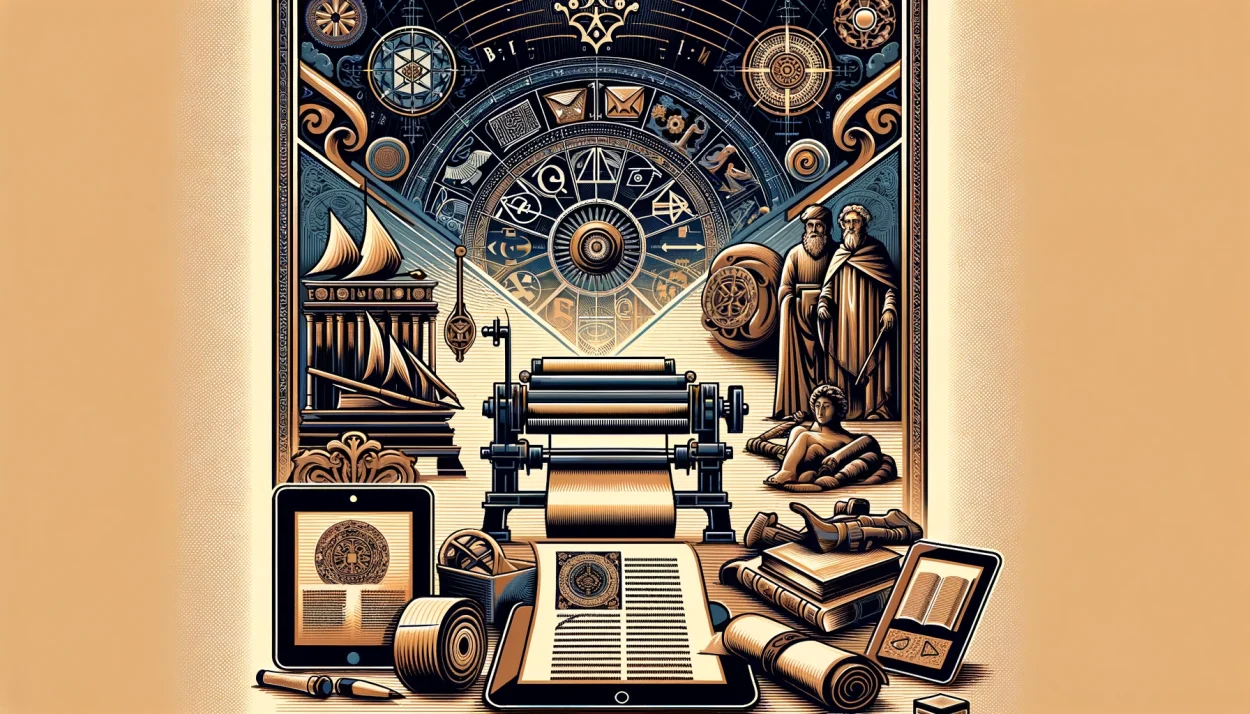
“Evolution of Print Culture: Impact on Society, Politics, and Culture”

Print Culture and the Modern World
The invention of print technology revolutionized the way knowledge was disseminated and consumed, profoundly impacting society, culture, and politics. This transformation began with the first printed books and spread across Europe, leading to a print revolution that had far-reaching effects on the reading public, the nineteenth century’s socio-political landscape, India’s engagement with print, religious reform, public debates, new forms of publication, and issues surrounding print and censorship.
i) The First Printed Books
The journey of print culture began in East Asia, with the earliest known printed book, “The Diamond Sutra,” produced in China in 868 AD using woodblock printing technology. This method involved carving the entire page of text in reverse on a wooden block, inking it, and then pressing it onto paper. Though labor-intensive, woodblock printing was a significant advancement over manuscript writing and allowed for multiple copies of texts to be produced more quickly.
ii) Print Comes to Europe
The transition of print technology from East Asia to Europe transformed the landscape of European society and culture. The development of movable type by Johannes Gutenberg in the 15th century, culminating in the printing of the Gutenberg Bible around 1455, marked the beginning of the print revolution in Europe. Movable type printing was more versatile and efficient than woodblock printing, significantly reducing the cost and increasing the speed of book production.
iii) The Print Revolution and its Impact
The print revolution led to the mass production of books, making literature and scientific knowledge more accessible to a broader audience. It democratized knowledge, breaking the monopoly of the church and the aristocracy over education and learning. The proliferation of printed material also stimulated literacy and intellectual discourse, paving the way for the Renaissance, the Reformation, and the Scientific Revolution.
iv) The Reading Mania
As books became more accessible, Europe saw an unprecedented surge in reading among the public. This “reading mania” encompassed a wide range of genres, including literature, political pamphlets, newspapers, and scientific treatises. The spread of literacy and the appetite for reading transformed public consciousness, encouraging critical thinking and debate.
v) The Nineteenth Century
The nineteenth century witnessed the expansion of the print culture into newspapers and periodicals, catering to the interests of the burgeoning middle class. Technological advancements, such as the steam-powered printing press and the telegraph, further accelerated the spread of print media. This era also saw the rise of serialized novels, which became immensely popular, reflecting and shaping the social and moral outlook of the time.
vi) India and the World of Print
Print technology was introduced to India in the late 15th century by Portuguese missionaries. However, it wasn’t until the 18th century that print culture began to flourish in India, with the establishment of press regulations under British colonial rule. Newspapers and books played a crucial role in the spread of modern ideas and the freedom struggle, facilitating the exchange of nationalist thoughts and the critique of colonial policies.
vii) Religious Reform and Public Debates
Print culture in India also fueled religious reform and public debates. Printed literature enabled reformers to reach a wider audience, challenging traditional practices and advocating for social and religious reforms. Debates on caste, religion, and women’s rights were facilitated by the growing accessibility of print media, contributing to the social awakening of the 19th and early 20th centuries.
viii) New Forms of Publication
The 19th century saw the emergence of new forms of publication, including pamphlets, leaflets, and periodicals, which allowed for the expression of diverse political, social, and religious views. These new forms of print media were instrumental in mobilizing public opinion and organizing social movements.
ix) Print and Censorship
With the expansion of print culture, governments and religious authorities sought to control and regulate printed material through censorship. The struggle between the freedom of the press and censorship has been a recurring theme in the history of print culture, reflecting the tension between authority and the dissemination of ideas.
The evolution of print culture from the first printed books to the modern world encapsulates a critical shift in how societies communicate, learn, and challenge existing norms. Print culture has not only facilitated the spread of knowledge and ideas but also played a pivotal role in shaping the political, social, and cultural contours of the modern world.